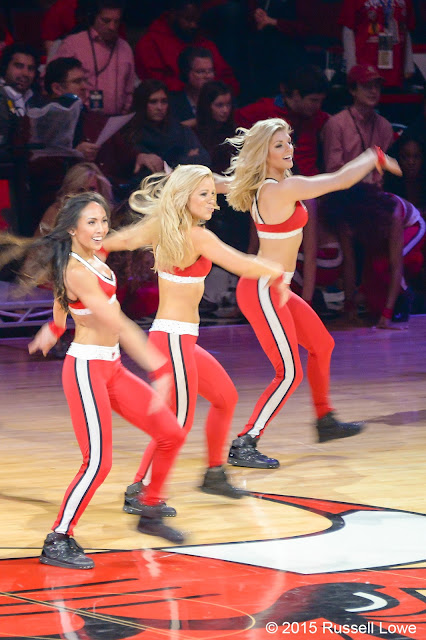Photos from last night's disappointing Chicago Bulls game against the Phoenix Suns. We lost 103-101 at 0.3 seconds left in the game! We were ahead of the Phoenix Suns most of the game by as much as 13 points too!
I struggled all night trying to get a decent shot with the Nikon 28-300mm f3.5-5.6 VR lens. While it's a good lens for "vacationing" covering most typical focal ranges from wide to telephoto in one lens, its limited aperture prevented enough light to enter the camera forcing a higher ISO to maintain enough shutter speed to freeze the action. This confirms what I have been telling students all along that you really do need an f2.8 lens for indoor sports.
This meant the images were noisier than preferred, even though the Nikon Df's great image sensor was there to help out. I also noticed that the sharpness was no way as good as the lens I usually use for indoor sporting events, the Nikon 70-200mm f2.8 VRII lens.
While the Nikon 28-300mm f3.5-5.6 lens is not a "cheap" lens by any means at $946.95 (at B&H Photo), it cannot compare to the better 70-200mm f2.8 VRII at $2096.95 (current B&H pricing).
Here are some images taken with the Nikon Df and Nikon 28-300mm f3.5-5.6 VR lens. Images were usually taken with Shutter Speed Priority set at 1/320 second and f5.6 with Auto ISO. ISO's were ranging between ISO 3200 and ISO 6400 on average.
Many people will likely see nothing wrong with these images. But if you have seen how sharp and crisp the Nikon 70-200mm f2.8 VRII images are, you'd notice the difference! But for most people, these images are just fine.
I was located in section 113, row 12. Decent seats at the United Center!
You need AT LEAST a shutter speed of 1/320 second for indoor professional basketball games. 1/400 second would be even better, but with the limited light coming in due to the f5.6 lens, I didn't want my ISO to be any higher than it already was at ISO 6400! It would have pushed the camera's ISO to ISO 12,800 which would start looking too noisy. So, I decided to leave the camera set at 1/320 second and timed my shots to minimize blur from the players, shooting at the peak of their movement. Unfortunately, many of my shots were ruined by the "paid" house photographer who had set up strobe lighting throughout the United Center. Seemed every time I hit the shutter for the best shot, he was shooting too! This meant that many of my best shots had his flash going off whereas I had metered for my own shots that used the ambient light exposure, not his flash exposures. It just white washed my shots! If you think about it, the chances to get a perfectly timed shutter release of mine to coincide with his are very slim. But it just goes to show that "pros" often do hit the shutter at the exact same time given that we know when to push that shutter button to get the best shot!









No comments:
Post a Comment